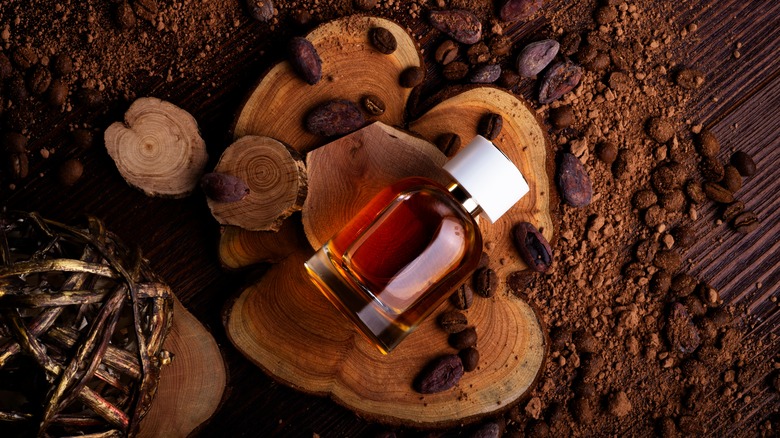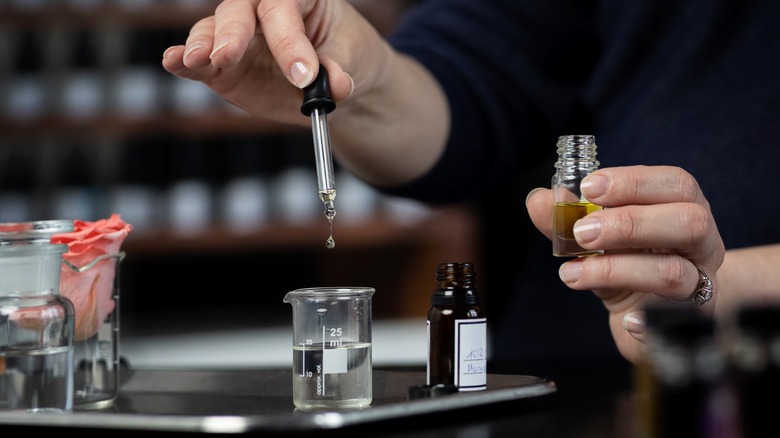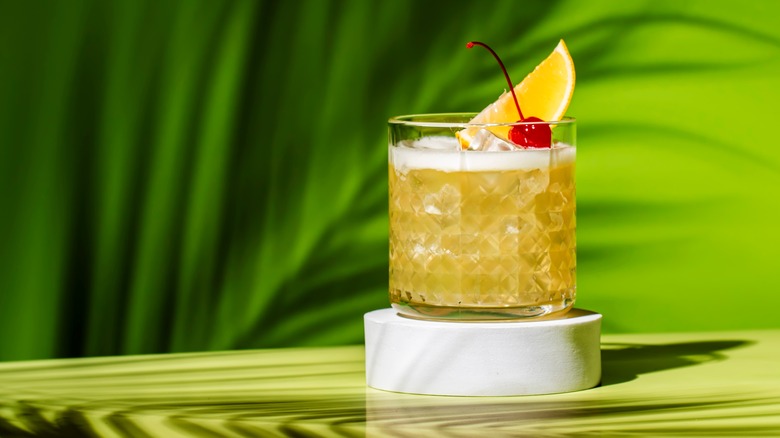Your Guide To Bitter Notes In Fragrances (The Anti-Gourmand Scent)
Do you know how most people have a hard and fast preference for either sweet or salty snacks? Fragrances aren't all that different, as it turns out. The fragrance industry has many categories, and many people have a couple of tried-and-true favorites. From woody Chypre perfumes to floral fruity and all the scents in between, there's something for everyone. This is all too important considering that humans can actually smell more than one trillion distinct scents!
Fragrances are far more complex than most people realize, with each scent typically featuring a cocktail of notes from different fragrance families to (hopefully) produce a unique scent. Although bitter notes have long been present in perfumes, Eau de toilettes, and colognes, they are starting to take front row center in many of the newer fragrances. This is a substantial departure from the vastly more typical fruity, floral, and light and natural scents that have long dominated the fragrance marketplace.
Bitter notes in fragrances, explained
Bitters don't have their own section on the fragrance wheel because they actually bleed over into a lot of categories. For example, patchouli is a woody note that is often described as bitter, but there are also plenty of fruity citrus bitters out there, such as bitter orange or grapefruit. Wormwood is another popular bitter because it is said to be extremely herb-centric and very strong. It has historically been used sparingly in scents, but now that bitter notes are surging in popularity, it can be detected much more easily. Then there's cacao, which gives an edge to any perfume, as both bitter and even a little bit spicy. These and other bitter notes can be used to balance out richer fragrances, keeping a floral or fruity scent in particular, from being overwhelmingly heavy. Surely, anyone who has ever been stuck in an elevator with someone who used a heavy hand when applying a strong floral can appreciate the measured use of bitter notes.
This is why bitters are so popular right now
Bitter notes in fragrances are becoming more common because people are seemingly bored with the more traditional gourmand perfume options. Bitters add a level of individuality and sophistication that a lot of scent-minded people are craving. This is in sharp contrast to recent years when sweet fragrances ruled the market, according to The Zoe Report.
Modern gourmand perfumes have been likened to decadent desserts — often overly sweet, flirty, and indulgent. Candy lovers, for example, are often drawn to gourmand fragrances because they typically feature notes of chocolate, berries, vanillas, caramels, and other sensational sweets. Black coffee is another note that features prominently in some gourmand scents, which is oh-so-appropriate because of how the beverage itself pairs nicely with actual desserts. So for people who are ultimately drawn to a fragrance for comfort, bitter notes are unlikely to sway them away from their signature scent. But those who prefer a less typical, edgier option are likely to toss gourmand fragrances by the wayside in favor of bitter scents.
How bitter fragrances smell depends on multiple factors
As we've already pointed out, bitter notes are helpful in keeping sugary or floral scents from being too sweet. Think of it like sour cream, which can change the flavor of a dish based on how much you dollop on.
Perfumer Fabrice Pellegrin told The Zoe Report that bitter notes can bring a subtle contrast to spicy fragrances or they can add a little bit of punch to aromatic perfumes. These delicate combinations add multiple layers to a scent. This is then further influenced by one's own personal aroma, since much like fingerprints, every single person has a unique scent. These conflicting factors are why one scent may be a slam-dunk for one person, but a hard pass for another.
To make matters more complicated, our sense of smell changes dramatically as we age, so the perfume you fancy as a teen is not likely to gel with you once you hit your 30s. There are simply so many personal factors that go into selecting a signature scent that it's nearly impossible to predict exactly which way a person will lean.
The crossover between drinks and scents
When it comes to recent beverage trends, there has been an uptick in the popularity of cocktails that shy away from sweetness, such as Aperol and absinthe. Since the senses are all intimately connected to each other (especially taste and smell), it's not too shocking that the interest in bitter fragrances has also increased. For example, a grapefruit-infused Paloma is not much of a departure from fragrances featuring the same bitter citrus aroma. Or think about a tart Campari that is mixed with sweet syrup to cut the overwhelming effects of both. Even some of the most basic and traditional cocktails, like margaritas, whisky sours, or martinis feature a tart twist that people crave on repeat. As a result of a mixology-inspired society, it's clear to see why the trend of trying new and different combinations of bitters has bled over into the fragrance category.
Try these fragrances for a hint of bitter
The fragrance section of any store is overwhelming, to say the least. It can be near impossible to differentiate between complex scents after a few minutes in the overloaded air space. Before plunking down that credit card, grab some samples and take them home to test them out in a place where they will actually smell the right way.
Perfume de la Tierra by Latinx company Ceremonia retails at a fairly affordable price point compared with many designer options. Or, there's the decidedly more luxe Fanfare Eau de Parfum by Thameen, which includes vermouth, musk, and lemon flavors among its bitter profile. Finally, the decadently bitter Ithaque Eau de Parfum, made by Memo Paris, incorporates black pepper oil, bitter orange, and pink pepper among its many bitter notes. Once you land on a winner, it's time to head back to the store for the big purchase.





